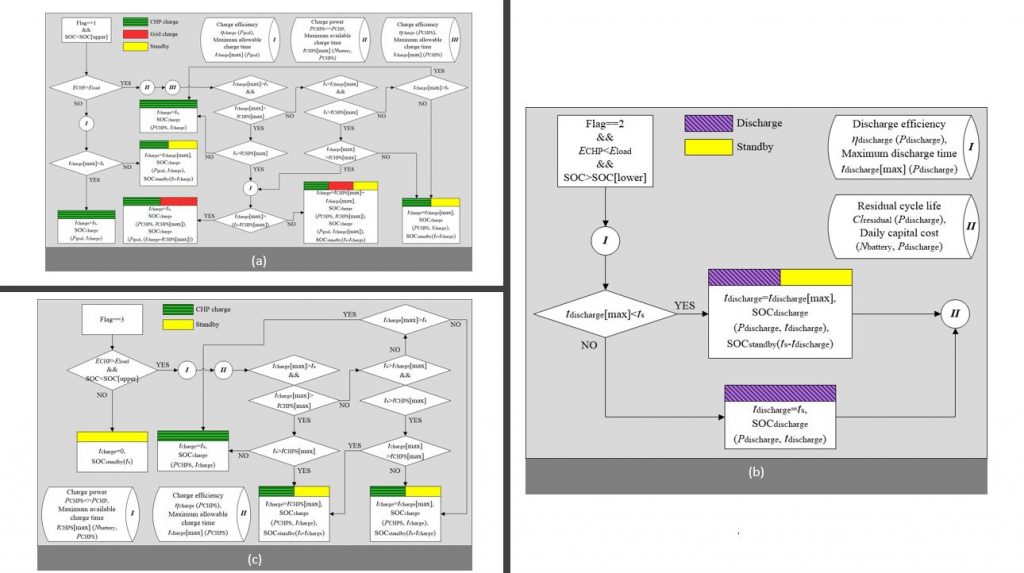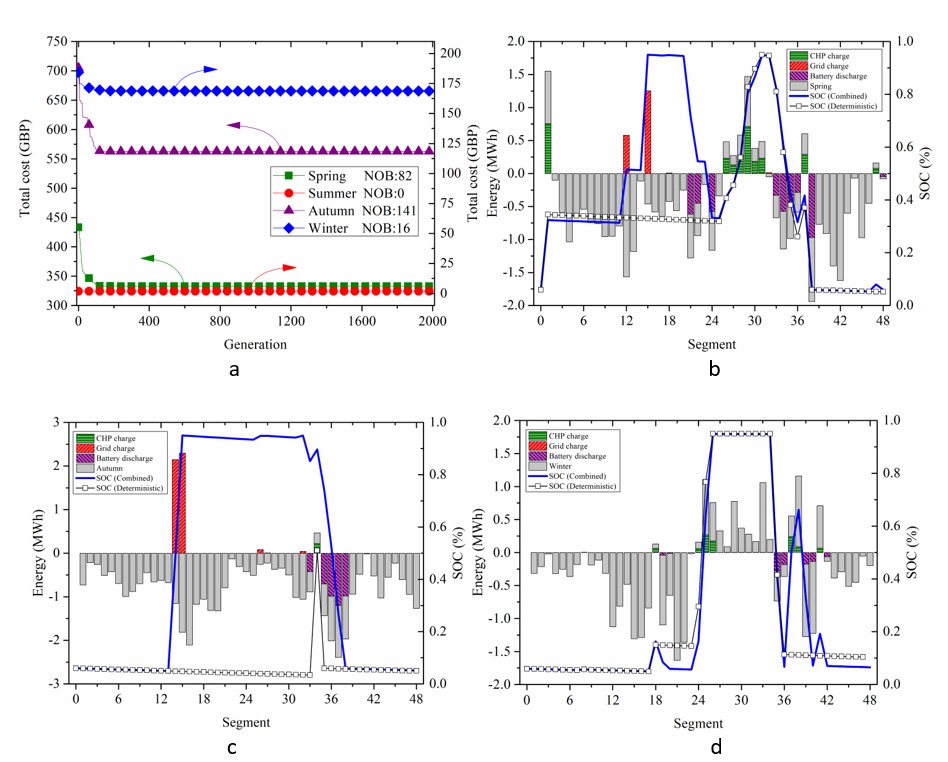Academics and researchers involved in the EPSRC Supergen Energy Networks Hub, based in the School of Engineering at University of Warwick, Dr Dacheng Li, Mr Songshan Guo, Dr Wei He, Mr Markus King and Prof Jihong Wang recently published the paper “Combined capacity and operation optimisation of lithium-ion battery energy storage working with a combined heat and power system” in Elsevier’s journal Renewable and Sustainable Energy Reviews.
About the Author

Dr Dacheng Li has worked as an Assistant Professor, Associate Professor in Chinese Academy of Sciences since 2012, and joined the Power and Control Systems Research Laboratory, University of Warwick in 2019. His research focuses on the intelligent optimisation of energy storage (i.e., Phase Change Materials, Compressed air, Lithium-ion Battery) based multi-vector energy systems. He has worked as a project leader sponsored by the National Natural Science Foundation of China and the Key deployment project of Chinese Academy of Sciences for optimisation and demonstration of kW, MW-level energy storage systems. Currently, he is involved in the RCUK’s Energy Programme and works on self-powered active cooling and cleaning technology for solar PV systems to improve the efficiency of renewable energy utilisation. Additionally, he is participating in the investigation on the on-line condition monitoring for biomass power plant mills. He has published more than 20 academic articles in leading journals and conferences, and 6 patents have been applied or authorised.
Contact email: dacheng.li@warwick.ac.uk
About the Paper
The paper reports the work completed in the first stage for the research project of combined capacity and operation optimisation for multi-vector local energy systems. The work is to investigate how energy storage can help improve CHP operation efficiency, reduce operation cost and CO2 emissions based on the campus energy system structure. In supporting future system and infrastructure design and planning, optimisation algorithms are developed which are able to derive the optimal solutions with consideration of the operation optimisation, optimal energy capacity, technical constrains and energy market information. The research is continuing to bring local renewable power generation, electrification of heating and EV to the optimisation process and extend from the campus energy system to the urban local energy system analysis.
Combined Heat and Power (CHP) systems are considered as a transitional solution towards zero carbon emissions in the next couple of decades [1]. The current CHP systems are mainly controlled by thermally led strategy, that is, the electrical power generation depends on the thermal energy demand. The mismatch between the power generation and load demand leads to the deficient energy utilisation and economic loss. In this context, electrical energy storage technologies could open up an opportunity to reduce energy bills by improving power utilisation locally and mitigate otherwise necessary network upgrades. Moreover, electricity storage could also enable the integrated system to gain additional economic benefits using the Time-of-Use (ToU) pricing structures.
Lithium-ion Battery (LIB) is a promising electrical storage technology because of its high energy density and Coulombic efficiency. Integration of a Lithium-ion Battery Storage System (LBSS) with CHP systems can provide operational flexibility and improve the self-sufficiency rate. However, the lifetime cash flow of a battery storage integrated CHP system is inherently complex. An installation of LBSS leads to an increase in system capital expenditure; real-time operation of the battery system under varying user-load patterns and ToU rates determines the system operating expenses (including revenues), and the LBSS system lifetime [2]. All these factors are coupled and interactively affect the economic viability of using LBSS in CHP systems.
An innovative combined planning method is proposed in the paper to improve the economic gains of the CHP systems by integrating the lithium-ion battery storage system. The paper focuses on the simultaneous optimisation of storage capacity design and operation strategy formulation of the LBSS subject to the variations of the load and power generation from CHP with consideration of LBSS degradation and cost, and ToU pricing structures. The new strategy is implemented and tested using the University of Warwick (UoW) campus CHP system combined with the LBSS facilities.
A techno-economic model that describes LBSS-integrated CHP system operation, performance, and economic gains was derived, using the historic and experimental data. Then an integrated optimisation framework with the Biogeography-Based Optimisation (BBO) method that co-optimises battery storage capacity (Capital Expenditure) and temporal operational strategy (Operating Expensed) was proposed, considering control-dependent battery degradation rate at the system planning stage (Figure 1).

A real campus-scale CHP system and a 50 kW demonstration LBSS at the UoW was used to verify the effectiveness of our proposed method, which also exhibits the contribution of the LBSS in improving the economic performance of CHP systems (Figure 2).

Besides, considering that the price of the LBSS would decrease gradually and the profitability from the ToU structure remains uncertainty in the following decades [3], this paper investigates the variation trend of profit gain and the corresponding Number of Battery (NOB) under different LBSS price and ToU rates to predict the future contribution of the LBSS technology in improving the economy of the CHP system (Figure 3).


Application results demonstrated that a combined management mechanism was established to achieve the optimal balance between the profit gain and capital loss of the LBSS integration. The conducted work for maximising potential profits and optimising number of batteries with the change of LBSS cost and ToU structure would provide competitive guidance for investors to develop a reasonable solution to improve the economy of CHP systems by integrating of LBSS in the next decades.
The full paper is available to view.
Reference:
[1] Department for Business, Energy & industrial strategy. Digest of UK energy statistics (DUKES) [Chapter 7]: Combined heat and power 2019.
[2] Davies DM, Verde MG, Mnyshenko O, Chen YR, Rajeev R, Meng YS, et al. Combined economic and technological evaluation of battery energy storage for grid applications. Nat Energy 2019;4:42–50.
[3] Oliver Schmidt, Sylvain Melchior, Adam Hawkes, Iain Staffell. Projecting the Future Levelized Cost of Electricity Storage Technologies. Joule 2019;3:81-100.